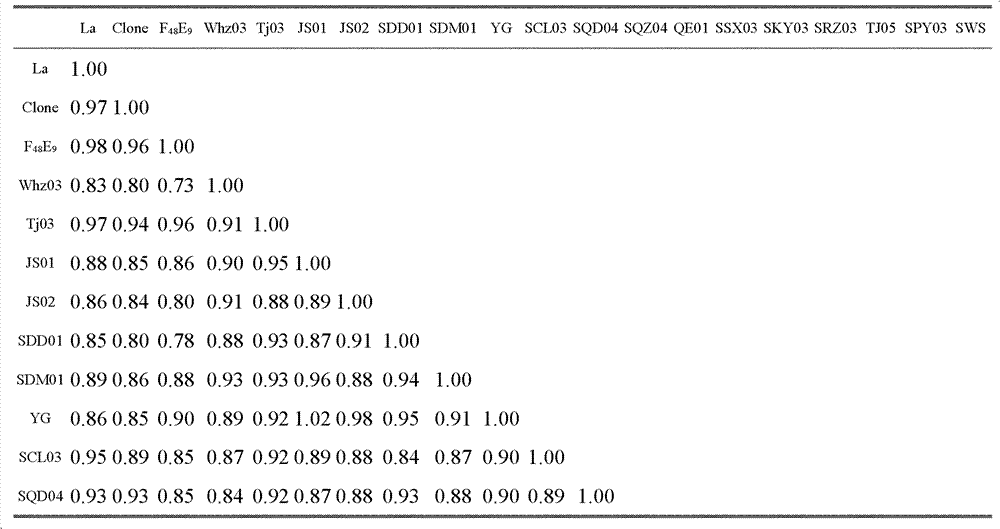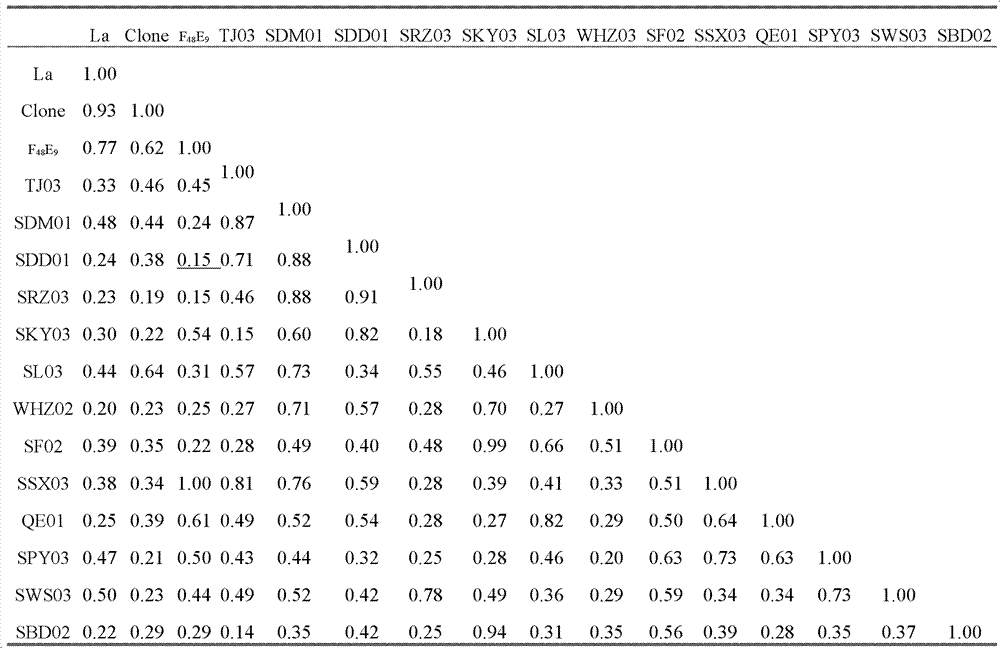Chicken Newcastle disease virus and its separation method
A chicken Newcastle disease virus and virus isolation technology, applied in the field of animal virology, can solve the problem that traditional vaccine strains cannot produce effective protection
- Summary
- Abstract
- Description
- Claims
- Application Information
AI Technical Summary
Problems solved by technology
Method used
Image
Examples
Embodiment 1
[0041] The isolation and cultivation of embodiment 1 virus:
[0042] Aseptically collect the trachea, brain, fallopian tube and liver of the diseased chicken, weigh them and add sterilized normal saline in a weight ratio of 1:3, homogenate, ultrasonicate, centrifuge at 3000r / min for 15min, take the supernatant and add green (Strep)mycin double antibody to 2000IU / ml, put in 4°C refrigerator overnight, after passing the sterility test, inoculate five 10-day-old SPF chicken embryos, 0.2ml per embryo. Discard the chicken embryos that died within 24 hours, and then light the eggs once every 6-8 hours, take out the dead chicken embryos in time, refrigerate them at 2-8°C, take out all the chicken embryos until 96 hours, and collect the chicken embryo allantois aseptically After the reserved sample is tested, the virus isolate can be stored at -70°C for future use.
Embodiment 2
[0043] The identification of embodiment 2 virus:
[0044] 1. Hemagglutination test (HA)
[0045] The virus isolate undergoes agglutination reaction to 1% chicken red blood cells, HA is 2 9 , that is, the agglutination titer of the virus is 2 9 .
[0046] 2. Hemagglutination inhibition test (HI)
[0047] The ability of the virus to agglutinate red blood cells can be inhibited by the corresponding specific antibody, namely the hemagglutination inhibition test (HI), which is specific. The HI cross-inhibition test was carried out between virus isolates and specific Newcastle disease, avian influenza H9 and AIV H5 subtypes, Egg Drop Syndrome (EDS) and other viral single-factor positive sera for preliminary differential diagnosis. Specific method: According to the results of the HA test, determine the hemagglutination value of the virus, and prepare a virus solution with 4 hemagglutination units; carry out on a 96-well micro-reaction plate, and use the method of diluting serum w...
Embodiment 3
[0059] Example 3 Comparison of Antigenicity of SDM01 Strain and Other Newcastle Disease Isolates
[0060] 1. HI homology comparison
[0061] For the preparation of single-factor positive serum, according to the national SPF chicken microbial monitoring method, the prepared 20 strains of NDV antigen and positive serum were respectively subjected to cross HI experiment, and the average of 5 detection values was taken. At the same time, set: SPF chicken negative serum, Newcastle disease positive serum control and virus control. The calculation of HI antigen homology is carried out according to the immunological method: r1 = heterologous serum titer 1 / homologous serum titer 1, r2 = heterologous serum titer 2 / homologous serum titer 2, the results are shown in Table 1.
[0062] La Sota had the highest antigenic homology with Clone30 and F48E9, 0.97 and 0.98, respectively, and the antigenic homology with 17 isolates was 0.70-0.97, most of which were between 0.85-0.90. Among the...
PUM
 Login to View More
Login to View More Abstract
Description
Claims
Application Information
 Login to View More
Login to View More - R&D
- Intellectual Property
- Life Sciences
- Materials
- Tech Scout
- Unparalleled Data Quality
- Higher Quality Content
- 60% Fewer Hallucinations
Browse by: Latest US Patents, China's latest patents, Technical Efficacy Thesaurus, Application Domain, Technology Topic, Popular Technical Reports.
© 2025 PatSnap. All rights reserved.Legal|Privacy policy|Modern Slavery Act Transparency Statement|Sitemap|About US| Contact US: help@patsnap.com



